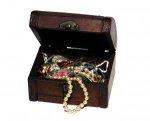Personal Budget Planning Define Your Net Worth

The next step in personal budget planning is to take an inventory of your total net worth. Your net worth is everything that you and your spouse have that can be converted to cash if the need to do so were ever to arise.
First, total all the cash you have in your bank accounts. This should include, but is not limited to, checking accounts, savings accounts, certificates of deposit, safe deposit boxes, etc. Calculate the current total of all the money in these accounts and any cash you have stashed in the safe deposit boxes.
Do not forget to count retirement accounts, health savings accounts, and educational savings accounts.
Now, it’s time to calculate any investments you have. If you are holding treasury bonds, savings bonds, mutual bonds, stock, and so on, add it all up. Include the value of any investment plan in which you are enrolled.
Why is This Necessary?
It is good to know what amount of money is represented by each category. To this end, you may want to be headlining these sources of net worth as we go along. For instance, you would have begun with a heading of cash, with all of its elements included; next is investments, and so forth.
Knowing the equity of your home is another important element in personal budget planning.
In the real estate category, list the address of each property you own; for most, it is just the home you live in. If you have had the property appraised recently, make a note of the estimated value.
If you have not had the property appraised for some time, you probably have an idea of what it’s worth. However you reach the determination, make a note of the estimated value of each property.
Now, get out the paperwork and determine how much you owe on that property. Subtract what you owe from the estimated property value and you have your equity total for that property.

Stuff Around the Home
For the next step in personal budget planning, you are going to inventory all of your physical objects. This is fun because you will be including everything from the basement to the attic, in the garage, or in private storage. You may not have a treasure box worth millions but you will be surprised once you start adding up what you do have.
First, you will want to get the blue book value of your cars. If you are still making payments on automobiles, you can subtract what you still owe from the blue book value to determine what equity value you have in your car.
Do not be too shocked if any of your automobiles have a negative equity value. Cars depreciate faster than any investment you can make and almost never increase in value unless they are antiques or collector’s items.
In your personal budget planning, having this inventory will enable you to see what could be sold to raise cash if needed or maybe just to get rid of the clutter that you never use.
Moving on, add up everything in the house from the furnishings to the kitchen utensils. You are going to be estimating the value of most of the things you own, so don’t knock yourself out too much over trivial amounts; assign a value and move on.
Once you have added up the value of all your physical objects, go back to the previous categories’ values and add them together.
You have now defined your net worth in a real cash sum. This helps the personal budgeting planning when preparing a family budget. Once you realize how much you really do have, you will see that cutting back spending on the non essential items becomes easier. You also now have an inventory for insurance purposes as well as to put with your will.
Learn about the different categories that make up your personal budget plan
The next article in this budget planning series is where you learn about the different categories of household budget planning.
Return from Personal Budget Planning
to Household Budget Made Easy.

